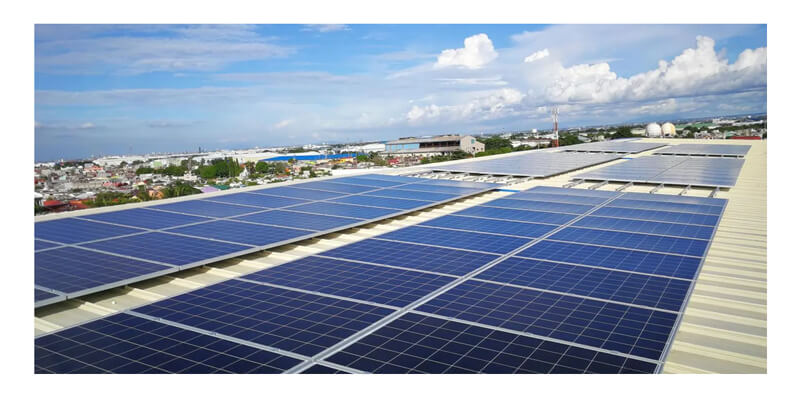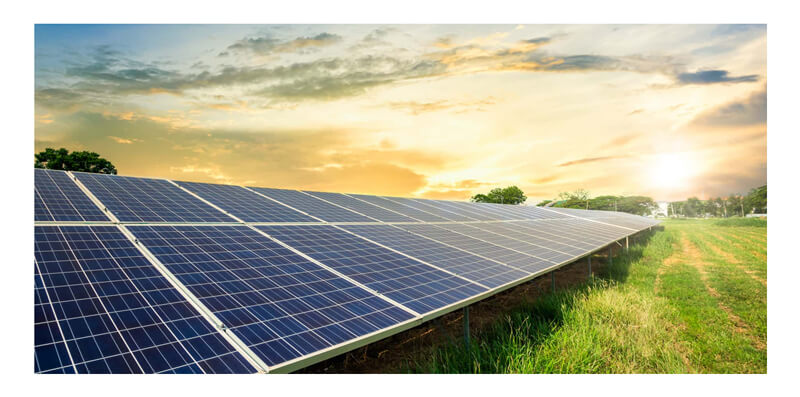Contents:
The Philippines, with its tropical climate and abundant sunlight, is an ideal location for solar energy adoption. As Filipinos look for sustainable energy solutions, solar panels, especially high-wattage ones like the 500W, are increasingly popular for both residential and commercial use. Here, we'll examine the pricing of 500W solar panels in the Philippines, key factors influencing costs, and where to buy them.

Benefits of Using 500W Solar Panels in the Philippines
-
High Efficiency: 500W panels generate significant power, ideal for locations with high energy consumption or limited roof space.
-
Space-Saving: These high-output panels save space, making them ideal for urban homes or businesses with limited roof space.
-
Cost Savings: Solar energy reduces dependence on the grid, potentially lowering monthly electricity bills.
-
Eco-Friendly: Solar power reduces carbon footprint, making it a more sustainable choice for a greener future.
Factors Influencing the Price of 500W Solar Panels in the Philippines
Several factors affect the pricing of 500W solar panels in the Philippines:
-
Brand and Quality: Well-known brands usually offer panels with higher efficiency, durability, and warranty, which can influence price.
-
Type of Solar Panel: Monocrystalline panels are generally more efficient and slightly more expensive than polycrystalline ones, while thin-film panels are less expensive but less efficient.
-
Installation Costs: Installation fees vary depending on location, type of roof, and any additional requirements like inverter installation or mounting system customization.
-
Inverter Type and Capacity: The type and size of the inverter required can also impact the total cost. Inverters are essential for converting solar energy into usable power for home appliances.
-
Government Incentives and Rebates: The Philippines offers incentives that can lower the overall cost, but these vary by location and policy.
500W Solar Panel Price Range in the Philippines
In the Philippines, the price for 500W solar panels can vary widely based on the factors above. The following table provides a breakdown of average prices by brand and type.

Trina Solar Panel

Jinko Solar Panel

Longi Solar Panel

JA Solar Panel
| Brand |
Efficiency (%) |
Daily Output (kWh) |
Warranty (Years) |
Price Range (PHP) |
| Trina Solar |
20.3 |
2.5 - 3.0 |
10 - 12 |
₱12,000 - ₱15,000 |
| LONGi Solar |
20.0 |
2.4 - 2.9 |
10 |
₱11,500 - ₱14,500 |
| JA Solar |
20.5 |
2.5 - 3.1 |
12 |
₱12,500 - ₱16,000 |
| Jinko Solar |
20.7 |
2.6 - 3.2 |
15 |
₱13,000 - ₱17,000 |
Where to Buy 500W Solar Panels in the Philippines
-
Authorized Distributors: Look for authorized dealers for brands like Trina, Canadian Solar, and Jinko Solar.
-
Online Marketplaces: Platforms such as Lazada and Shopee offer various models; however, ensure you're buying from reputable sellers to avoid counterfeit products.
-
Local Renewable Energy Stores: Numerous stores in cities like Manila and Cebu specialize in solar equipment, often offering installation services.
Additional Costs to Consider with 500W Solar Panels
While 500W solar panels bring significant savings, it’s essential to consider potential additional costs to budget effectively. Here’s an overview of expenses that may come up when installing a solar energy system in the Philippines:
-
Inverter Cost: Converting DC power generated by the panels to AC power for household appliances requires a reliable inverter. The cost of a good quality inverter can vary depending on its type and capacity.
-
Battery Storage (Optional): Battery systems are optional but are beneficial if you want power storage for use at night or during power outages. However, they can add substantial upfront costs.
-
Mounting and Installation: Professional installation is recommended to ensure the system is securely mounted and optimally positioned for sunlight exposure.
-
Maintenance Costs: While solar panels require minimal maintenance, periodic cleaning and occasional checks are needed to keep them in peak condition.
Below is a breakdown of potential additional costs for setting up a 500W solar panel system in the Philippines.
|
Expense Category
|
Description
|
Cost Range (PHP)
|
|
Inverter
|
Required for converting DC to AC power
|
₱5,000 - ₱10,000
|
|
Battery Storage (Optional)
|
For energy storage and backup
|
₱15,000 - ₱30,000
|
|
Mounting and Installation
|
Labor and materials for secure mounting
|
₱3,000 - ₱8,000
|
|
Maintenance
|
Periodic cleaning and inspection
|
₱500 - ₱1,000 annually
|
Tips for Maximizing 500W Solar Panel Efficiency
To get the most out of your 500W solar panels in the Philippines, consider the following tips:
-
Optimize Panel Positioning: Ensure panels face the sun’s path directly to maximize sunlight exposure throughout the day.
-
Regular Cleaning: Dust and dirt can reduce panel efficiency, especially in areas with high pollution or frequent rainfall.
-
Monitor Energy Production: Use monitoring apps or devices to track daily output. If output drops unexpectedly, it could indicate maintenance needs.
-
Invest in Quality Inverters: A reliable inverter maximizes energy conversion efficiency, ensuring you get the most usable power from your panels.
The return on investment (ROI) for a 500W solar panel depends on factors like initial installation costs, monthly savings, and maintenance expenses. In the Philippines, ROI can often be achieved in 4 to 6 years for households, given stable sunlight and consistent usage.
To give a clearer picture, here’s an estimated ROI calculation based on different installation cost scenarios.
| Initial Investment (PHP) |
Average Monthly Savings (PHP) |
Estimated ROI Period |
| ₱20,000 |
₱1,000 |
20 months |
| ₱30,000 |
₱1,200 |
25 months |
| ₱40,000 |
₱1,500 |
27 months |
Choosing the Right Supplier for 500W Solar Panels
Selecting a reliable supplier is crucial for ensuring the quality, durability, and performance of your 500W solar panels. Here are some key factors to consider when choosing a solar panel supplier in the Philippines:
-
Reputation and Experience: Look for suppliers with a strong track record and positive customer feedback. Established brands or authorized distributors are generally more reliable and provide better after-sales support.
-
Product Range and Warranties: A reputable supplier should offer a variety of panel options, including monocrystalline and polycrystalline panels. Check the warranties provided, as high-quality panels usually come with at least a 10-year product warranty and a 25-year performance warranty.
-
Technical Support: Solar systems occasionally require technical support for troubleshooting or upgrades. Choose a supplier that offers reliable technical assistance and maintenance services to ensure long-term performance.
-
Transparent Pricing: Be wary of suppliers with hidden fees or unexplained price variations. A reliable supplier will provide a clear breakdown of costs, including installation, maintenance, and any additional components.
-
Compliance with Philippine Standards: Ensure that the supplier’s products meet national and international standards for safety and performance. Compliance with these standards indicates the panels have been rigorously tested and are suitable for local conditions.

Installation Tips for 500W Solar Panels in the Philippines
Installation plays a critical role in the effectiveness of your solar panel system. Here are some installation tips to maximize the output of your 500W solar panels:
-
Ideal Roof Orientation: In the Philippines, solar panels should ideally face south to capture the most sunlight throughout the day. A slight tilt angle is also recommended to allow rainwater to wash away dust, ensuring a clean panel surface.
-
Avoiding Shaded Areas: Any obstructions like trees, buildings, or antennas can reduce sunlight exposure, which diminishes panel efficiency. During installation, check for potential shading issues, particularly during peak sunlight hours.
-
Proper Mounting System: Invest in a durable mounting system to keep the panels secure, especially given the Philippines’ susceptibility to strong winds and typhoons. High-quality mounting systems prevent the panels from moving or becoming damaged during extreme weather.
-
Choosing a Certified Installer: A certified installer ensures panels are safely and effectively connected to your electrical system. Qualified installers are trained to handle electrical connections and can provide guidance on maintenance and troubleshooting.
Future of Solar Energy in the Philippines
The future of solar energy in the Philippines is promising, as the country aims to reduce reliance on fossil fuels and increase its renewable energy capacity. As technology advances, solar panels are becoming more efficient and affordable, making them accessible to a broader range of consumers.
Several initiatives are being undertaken to expand the adoption of solar power in both urban and rural areas. With government support, private investment, and community awareness, solar power is set to become a mainstream source of energy in the Philippines. This transition can lead to lower electricity costs, a more resilient energy grid, and significant environmental benefits for the country.
By investing in solar panels now, Filipinos can contribute to a sustainable future while enjoying the long-term economic and environmental advantages of renewable energy.











